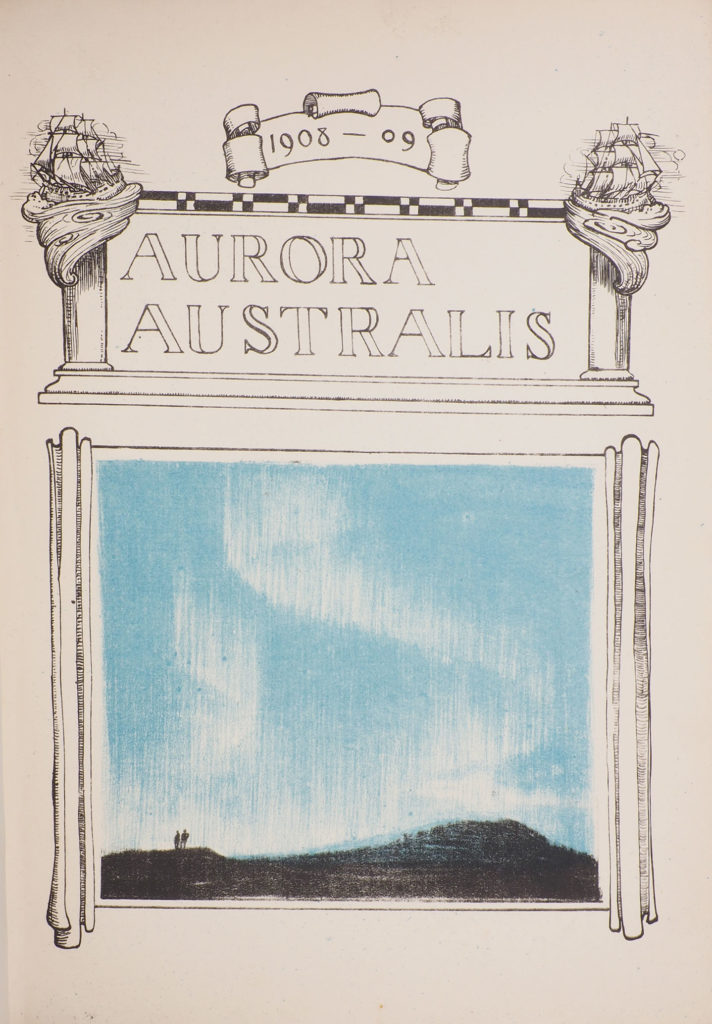
Written, printed and bound in the depths of an Antarctic winter, Aurora Australis is one of the most extraordinary of all twentieth-century books.
It was created during the fabled Nimrod expedition which took Shackleton to within 100 miles of the South Pole. As the first book printed in Antarctica it is the pinnacle of polar book collecting. The edition was printed in fewer than 100 copies, for private circulation only, of which less than 70 copies can now be accounted for. Copies were never offered for sale, but were given instead to sponsors and others who had made the expedition possible.
In the centenary year of Shackleton’s death, it is a privilege to be introducing a rediscovered copy of Aurora Australis, with its interesting and important provenance. It will be exhibited, for the first time, at the New York Antiquarian Book Fair, April 2022.
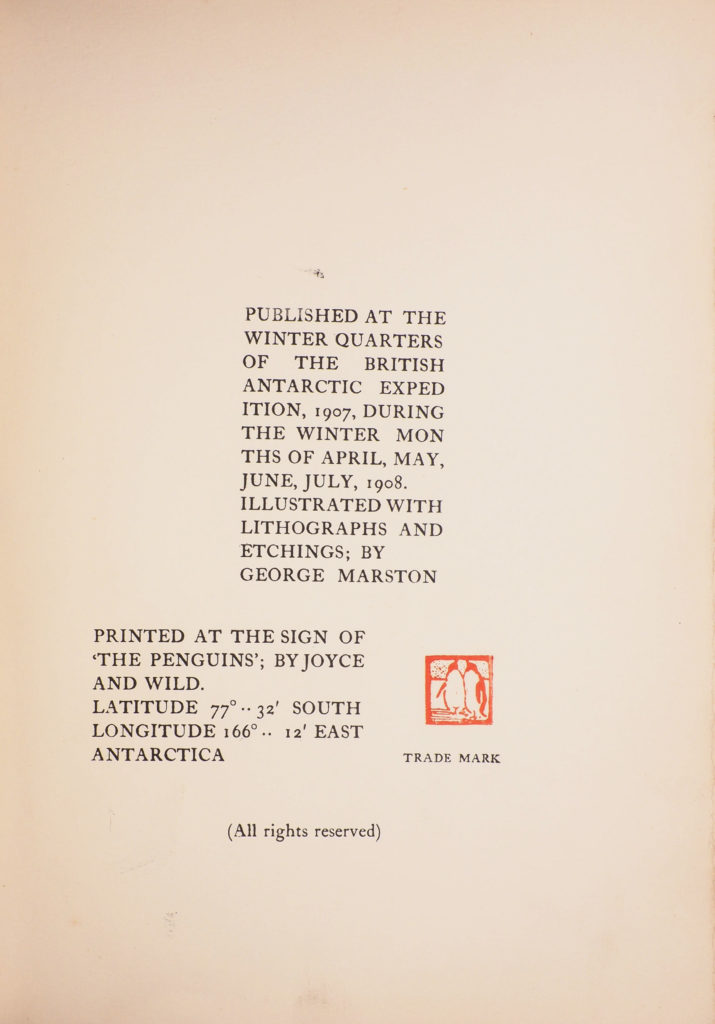
The book bears the imprint ‘Published at the Winter Quarters of the British Antarctic Expedition, 1907 During the Winter Months of April, May, June, July, 1908… Printed at the Sign of ‘The Penguins’; by Joyce and Wild. Latitude 77°.. 32′ South Longitude 166°.. 12′ East’, together with the little red printer’s mark of two penguins.
Contributions of text and images for Aurora Australis were made by all the expedition members and contemporary photographs show the two presses (one for the text, the other for plates) wedged into the cabins of Shackleton’s winter quarters at Cape Royds. Here the book’s printers, Ernest Joyce, James Murray and George Marston, pitted themselves against the elements to create a work of incredible accomplishment.
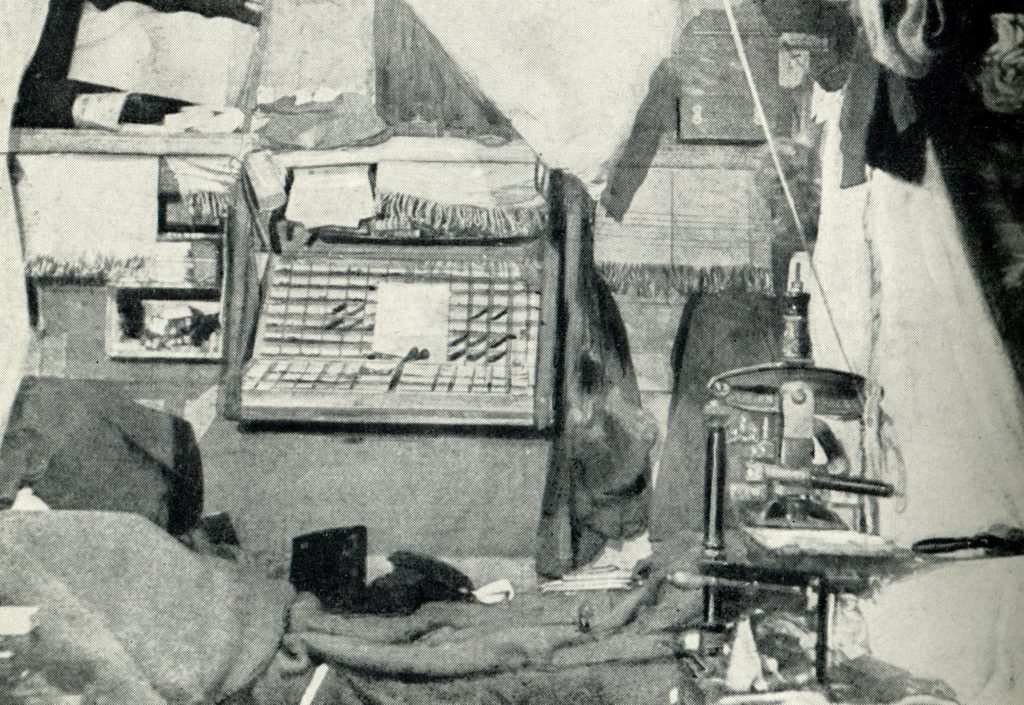
They recalled: ‘It is too cold to keep the printer’s ink fluid; it gets sticky and freezes. To cope with this a candle was set burning underneath the plate on which the ink was. This was all right, but it made the ink too fluid, and the temperature had to be regulated by moving the candle about.’ (Antarctic Days, 1913).
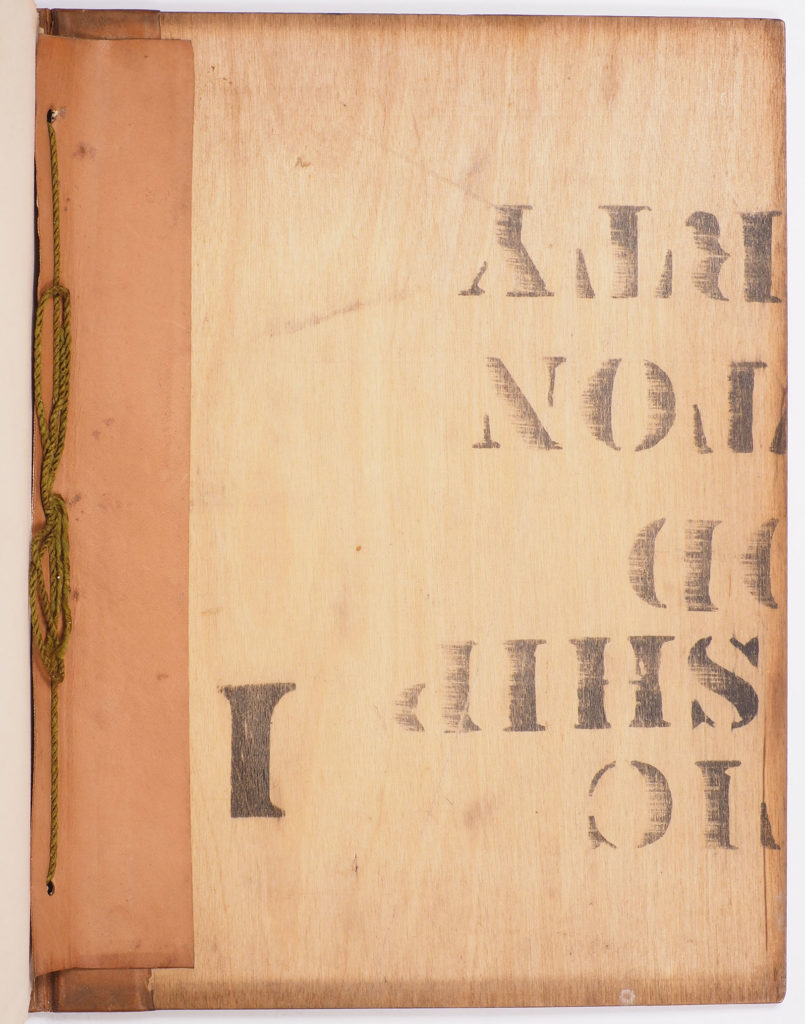
After this laborious printing process, the sheets were assembled and bound in boards of recycled plywood packing cases and backed with leather from the expedition’s pony harnesses. Each copy of Aurora Australis is slightly different, since their covers were purloined from a variety of different cases, with different stencilled labels. The lower board of this copy bears fragments of the stencilled words ‘Antarctic Ship Nimrod Lyttleton Party’.
The front endpaper of this copy also bears a pencil inscription in an unknown hand to ‘D. Kennedy Jones’, referring to Dorothy, daughter of the newspaperman William Kennedy Jones.
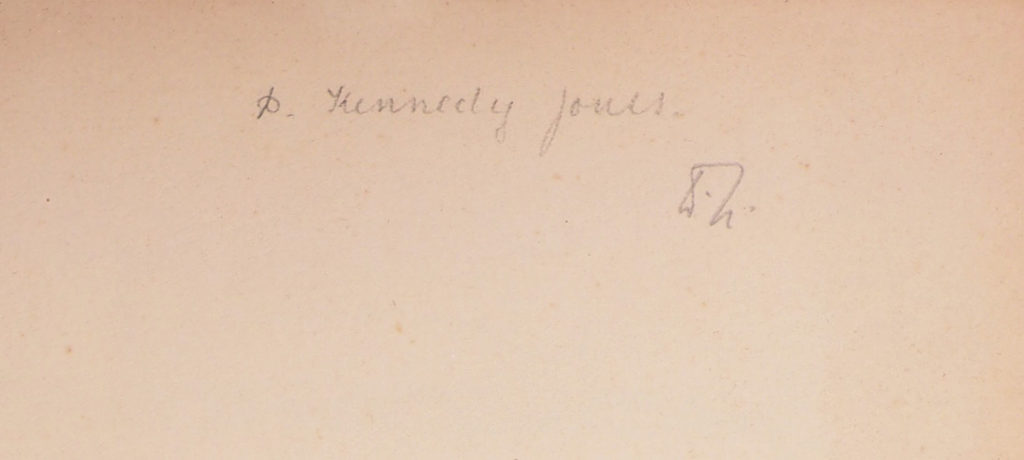
Kennedy Jones (known to most as ‘K.J.’) was Lord Northcliffe’s business manager at the Daily Mail, the newspaper which had obtained exclusive rights to Shackleton’s expedition to the South Pole, and which was the first to print news of its progress. Though the copy is not recognisably inscribed by any member of the expedition party, the proprietors of the Daily Mail would be obvious recipients of copies of Aurora Australis, though no such presentation (to either Northcliffe or Kennedy Jones) has previously been recorded. The inscription is apparently signed ‘W.H.’ and it has been suggested that this may be (or made on behalf of) William Heinemann, Shackleton’s publisher.
The Kennedy Jones copy has remained in the family, by descent, to the present day.
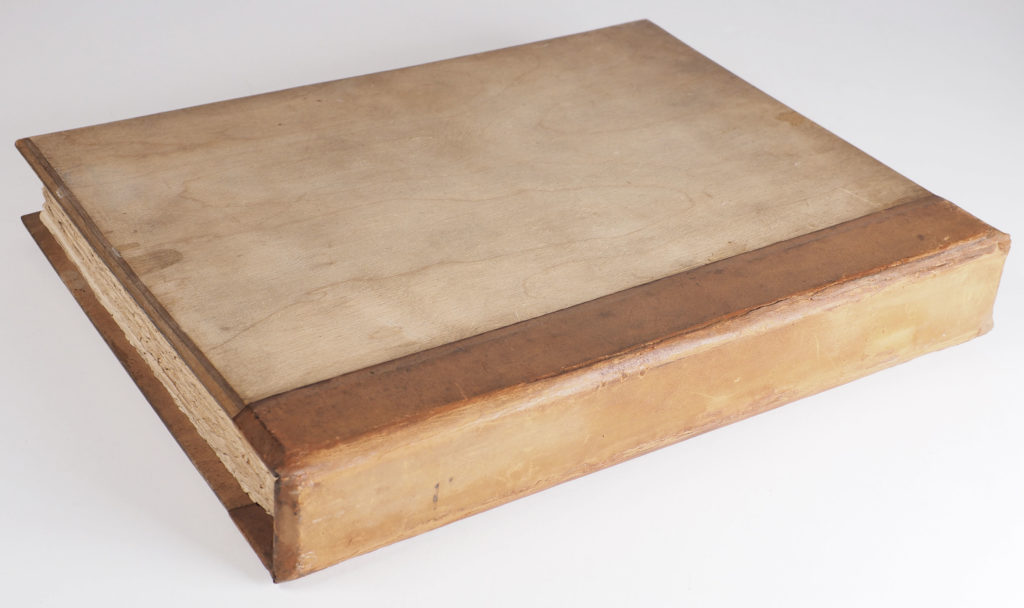
There is some variation between copies of Aurora Australis, given the mode of printing and binding, but this is a typical copy with eleven plates. A few copies have ten plates only (lacking the ‘Many shekels’ plate and having text in its place) which are argued to represent a first ‘state’ (‘Aurora Australis … A new Description of the first State’, Martin L. Greene in Book Talk, 2006). Copies can also vary in having a final caption leaf for a subsequently cancelled plate (‘A Giant Tick…’) or not. Ours is without. The most interesting variation is in the boards used for the binding, which used different sections of the many venesta plywood packing cases used for expedition supplies. Front and rear boards can bear stencilled lettering on their inside surfaces or be blank. The Kennedy Jones copy has the first board blank and the lower board with portions of the words and letters [Antarct]ic Ship [Nimro]d [Lyttle]ton Pa[rty]. The leather backing, recycled from the pony harnesses (all the expedition’s ponies perished) is fragile and prone to cracking and further degradation. Copies are often rebacked, preserving as much of the original spine as possible, but in the present copy the backing is present in its entirety, the joints carefully and unobtrusively repaired by James Brockman.
‘At most 100 copies were produced, but probably significantly fewer. Approximately 65 copies have been accounted for to date. At this time, about half are in museums or permanent institutional collections and half are in private hands’ (Rosove, 2001). The present copy was not known to Rosove and does not appear in Martin Greene’s Antarctic Circle census online. It is an important rediscovery. Please contact us for further details.
4to (260 ×165 mm), 93 leaves, including blanks, colour printed title and 11 plates. Bound by Bernard Day in original ‘venesta’ boards taken from expedition packing crates, backed with leather from recycled horse harnesses, title and penguin motif stamped in blind on spine, green silk binding cords, edges uncut as issued. Boards and spine slightly soiled, spine rubbed (both title and penguin device still visible), joints expertly and unobtrusively repaired. An excellent copy.
See: Rosove, Antarctica (2011), 304.A1.b; Spence 1095; Taurus Collection 60.
